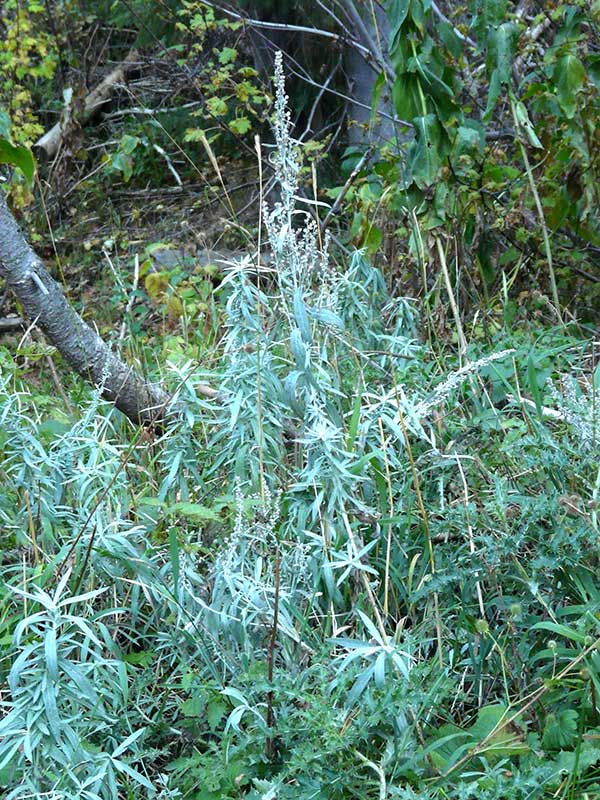Artemisia cana / silver sagebrush
- Low perennial, silvery shrub
- Highly aromatic, like sagebrush
- Entire leaves – no lobes
- Nondescript, inconspicuous flowers in small clusters with leaf-like bracts
- Grows in more moist habitat than other Artemisia spp.
Also known as: coaltown sagebrush, sticky sagebrush, silver wormwood, hoary sagebrush, dwarf sagebrush
Disclaimer: Other than mountain big sagebrush and threetip sagebrush, I will by no means guarantee my ID of any other Artemisia spp. Nevertheless, I will do my best and if you find I’ve blown it, well, just let me know. Thanks.
Like most of the other Artemisia spp., silver sagebrush is an aromatic shrub with semi-woody to woody stems. The leaves and stems are covered with glandular trichomes, giving the overall plant a silvery appearance. It may reach 2 to 5 feet tall, with individuals west of the Great Divide (i.e. in the Valley) being shorter than those to the east. Vegetative shoots are evergreen (although some sites describe them as deciduous, withering before winter) and perennial; floral shoots are annual but somewhat persistent after drying. In terms of coverage, silver sagebrush is second only to big sagebrush in total area occupied by a sagebrush species.
Silver sagebrush can be distinguished from the other sagebrushes in the Valley by its lanceolate leaves. They are thin and narrow, up to 3.5 inches long, and almost never lobed. Occasional lobed leaves on some plants may reflect hybridization with other species, especially mountain big sagebrush. Silver sagebrush plants branch freely, and the branches bear leaves all the way to the tip.
Also like the other sagebrushes, silver sagebrush flowers are pretty nondescript and inconspicuous, although the panicle inflorescences are obvious in late summer and fall. Flowerheads are produced in small clusters from the upper leaf nodes, and are surrounded by narrow, leaf-like bracts. Each inflorescence contains between 4 and 20 tiny yellow florets. The flowers themselves are perfect, i.e. with both male and female organs.
Pollination is basically by wind, making this another allergy causing species. The fruit is a small (ca. 1 mm) sticky-walled achene-like air-floater, bearing a single, tiny seed. But seeds are not the only means of silver sagebrush reproduction. Seed banking for more than a year is unlikely.
The silver sagebrush root system consists of a taproot and lateral roots. The species also sports rhizomes, located within a few inches of the soil surface. These rhizomes may extend out 3 or more times the height of the plants and can give rise to up to 50 sprouts. Plants also spread by sprouting and layering. Indeed, cloning is the most common means of reproduction. A strong sprouting response from rhizomes and root crowns following disturbance increases silver sagebrush’s ability to survive flood, ice scour, drought, and even severe fire damage.
Silver sagebrush is found on low hillsides, in riparian zones, in valleys, and in moist open woods and meadows. Overall, it requires more moisture than most sagebrush species and has superior flooding tolerance compared to them. Its drought tolerance is uncertain, but it did survive some real droughts during the dust-bowl years in the plains, so it may be considerable. This could depend on the site – on relatively deep soils, it can develop quite a deep taproot.
| Color | |
|---|---|
| Family | |
| Blossom size | |
| Inflorescence size | |
| Inflorescence type | |
| When? | |
| Where? |



